Southeast Wilderness Survival
aaaaa
There are a few different forms of easily portable, chemical tinder materials for starting fires. These are great because they are easily portable, just tuck them in a pouch until needed, have a long shelf life, and they essentially guarantee fire under pretty much any circumstances and in the worst weather. Of these my favorites are two that can be bought at most army surplus stores and stores that have a good selection of sporting goods, and one that can easily be made at home. The two commercially available are WetFire tinder by Ultimate Survival Technologies, and Trioxane which is a military issue fuel used for canteen stoves. The home-made one is petroleum jelly soaked cotton balls. All of these will ignite from sparks from a ferro rod, and I have successfully started fires with all of them under the worst of conditions and even in the falling rain.
In the colder months, when the need for fire to preserve life can be the greatest, the natural world contain a plethora of materials that are great for getting a fire started on dry days.
The tree lines and open areas of the southeast temperate rain forests are home to many forms of plants which produce light fluffy seed tufts and propagate by sending their seeds out upon the breeze to take root in a new location. There are grass seed tops, milk weed, horse weed, and thistle just to name a few, and all work great whether using a ferro rod, matches, or a lighter. In fact so much of this material in these fields works so well for starting fires that it can be dangerous to start you fire in them. gather all the materials you need and retreat back to an area with less flammable materials around to start your fire.
The tree lines and open areas of the southeast temperate rain forests are home to many forms of plants which produce light fluffy seed tufts and propagate by sending their seeds out upon the breeze to take root in a new location. There are grass seed tops, milk weed, horse weed, and thistle just to name a few, and all work great whether using a ferro rod, matches, or a lighter. In fact so much of this material in these fields works so well for starting fires that it can be dangerous to start you fire in them. gather all the materials you need and retreat back to an area with less flammable materials around to start your fire.
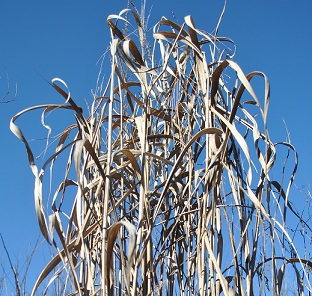
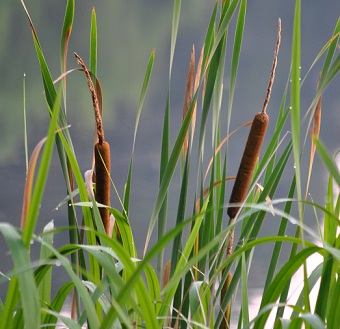
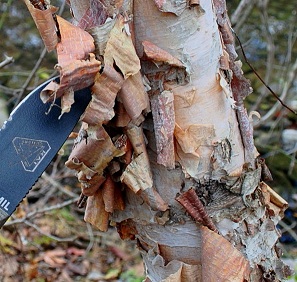
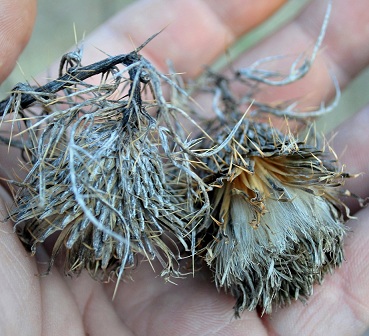
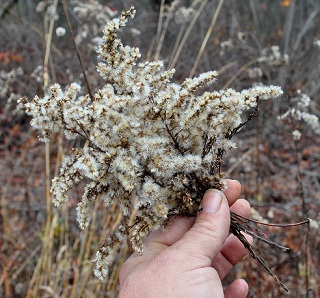
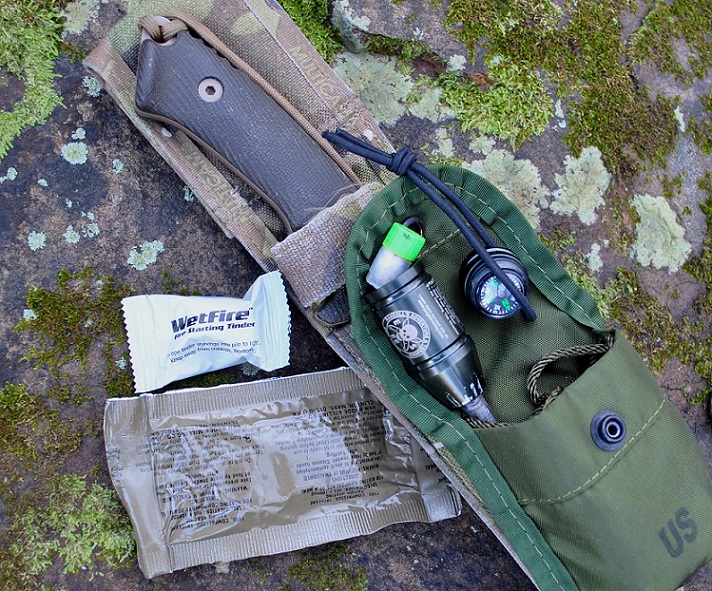
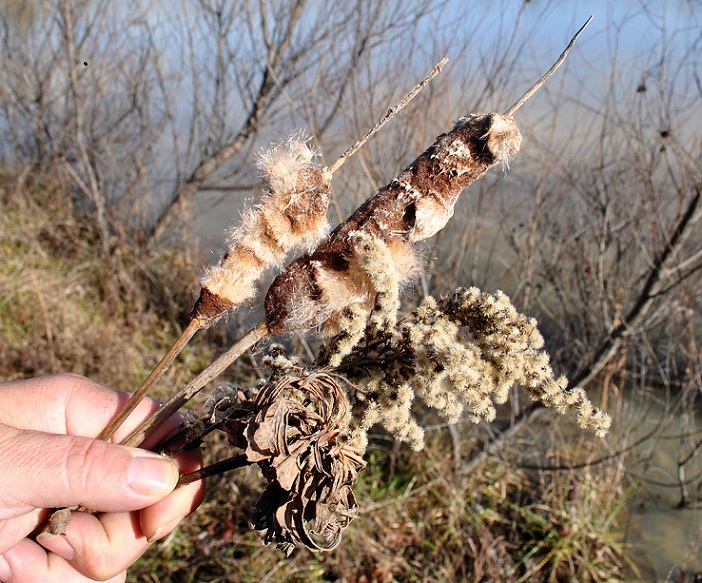
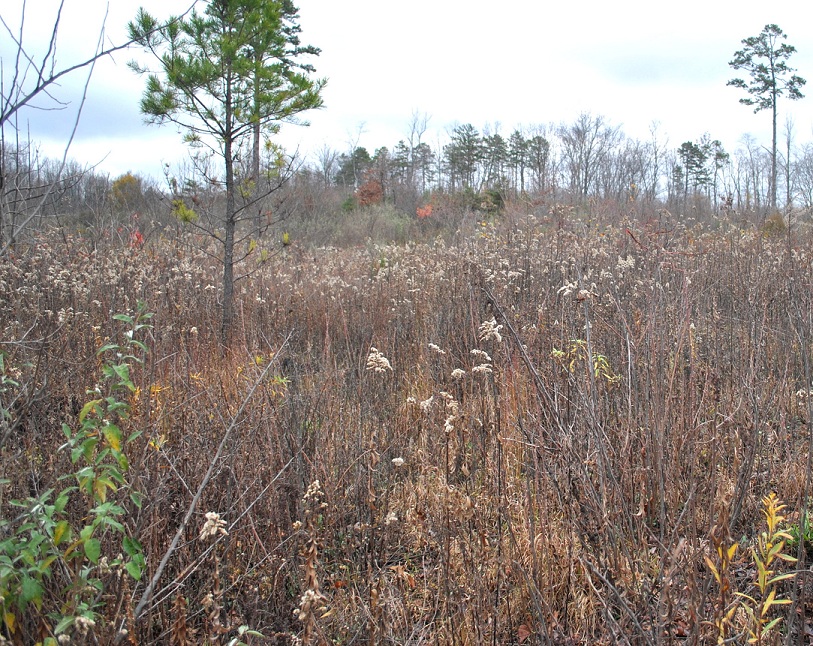
Even the small ponds, lakes, and swamps offer materials great for a first stage tinder material. Bulrushes, also called cattails here in the southeast, are good for a number of things. In the warmer months when the young shoots are fresh and green they can make for some decent eating. In the winter months they offer a few other great uses. One of those is that the dry fluff from the bursting seed pods makes a great thickener for soups and stews. and it also makes an excellent expander or filler for flour made from crushed grass seeds and acorns to make a form of flat bread. The other is that this fluff also makes a great first-stage tinder material. It is what we refer to as a flash-tinder and burns very fast, so it needs to be part of a layered system of tinders but when dry and fluffed it catches a spark really well.
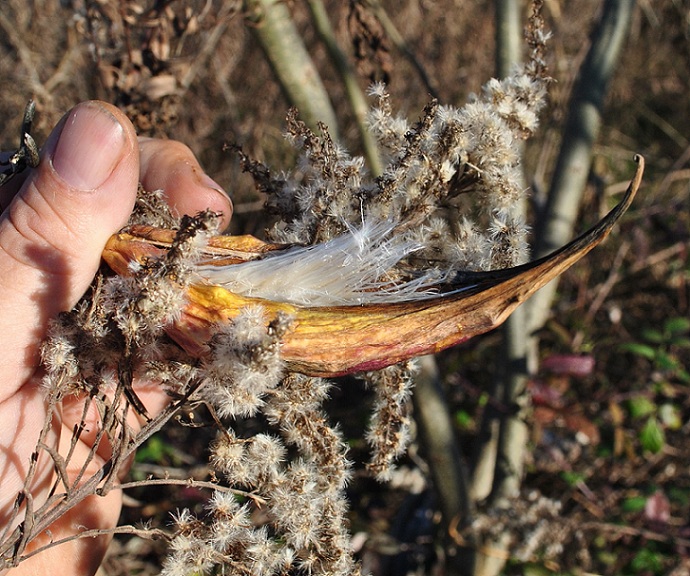
A quick foraging session in even a small open field or along a tree line in the autumn and winter months will, most of the time, quickly and easily yield enough tinder to start a fire.
In the later months even the dry leaves of the tall grasses will make a decent tinder on dry days, though it does need to be good and dry to take the sparks of a fire steel.
There is also kindling fuel to be found in these fields. The dry hollow stalks of woody plants make a great tinder material that burns very hot, but also burns up very quickly. The more of this the better, but in sufficient amounts can be used to ignite the heavier more solid hardwood twigs that you want to use to produce a good bed of coals for a sustained fire.
In the later months even the dry leaves of the tall grasses will make a decent tinder on dry days, though it does need to be good and dry to take the sparks of a fire steel.
There is also kindling fuel to be found in these fields. The dry hollow stalks of woody plants make a great tinder material that burns very hot, but also burns up very quickly. The more of this the better, but in sufficient amounts can be used to ignite the heavier more solid hardwood twigs that you want to use to produce a good bed of coals for a sustained fire.
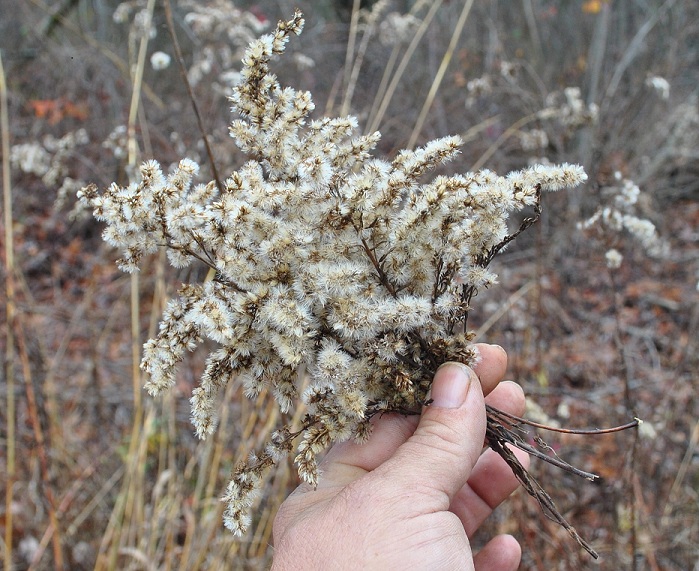
Of all the dry seed heads blowing around in the fields I think I'd have to say that horse weed is definitely my favorite. On a good dry day these little seed heads are as good a tinder for fire starting as any you can find. These fibrous balls of while fluff will take a spark from a ferro rod very easily and burn very hot and very quickly.
It is worth noting here that any material I reference as being able to easily ignite with sparks from a ferro rod will also work very well, in fact much easier, using the flames of a lighter or matches.
It is worth noting here that any material I reference as being able to easily ignite with sparks from a ferro rod will also work very well, in fact much easier, using the flames of a lighter or matches.
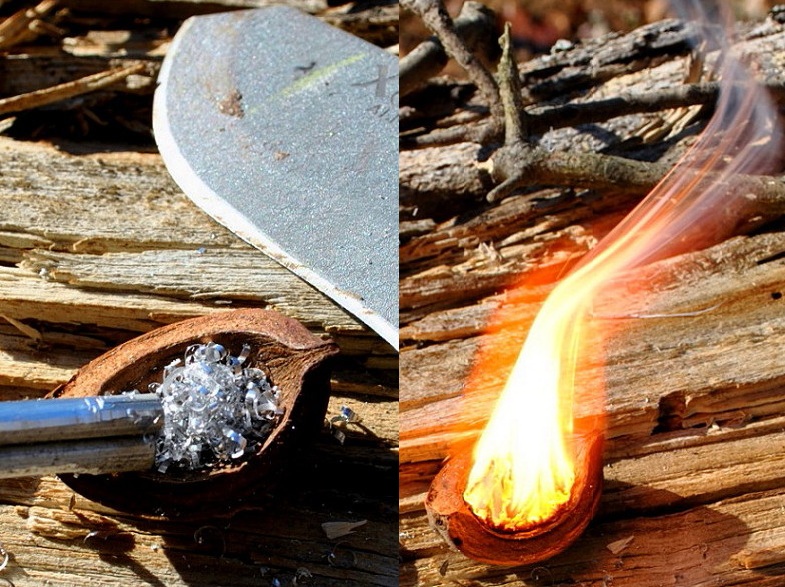
Another form of chemical tinder that is easily portable and will work in any environment is magnesium. Fine shavings of magnesium will burn very hot, somewhere in the neighborhood of 5800F. Magnesium firestarters do require the use of a knife or other durable sharp edge Simply scrape off a pile of fine slivers onto a leaf or into a nutshell and hit with sparks from a ferro rod and you have the first flames to start a fire. These flames will easily ignite dry-ish leaves that a ferro rod alone will not. The up-sides are that magnesium fire starters are not weather sensitive and most come with a built-in ferro rod. The down-sides are that they do wear down the edge of a knife rather quickly, and the slivers are sensitive to wind. You definitely need a wind-brake when working with them.
Another of my favorite tinder materials are the seed heads of the Scotch and English thistle plants. In the warmer months the bright purple flowers aren't useful for fire starting, but the dried flowers of autumn and winter work very well. You should take care when harvesting these because of the sharp spines on the plant. They are small and fine, and they are both annoying and a pain to get out if broken off below the surface of the skin. However with a little care you can quickly harvest enough seed heads from one plant to serve as a good flash tinder to help ignite materials that are more difficult to light with sparks and light easier from flames such as mostly dry leaves.
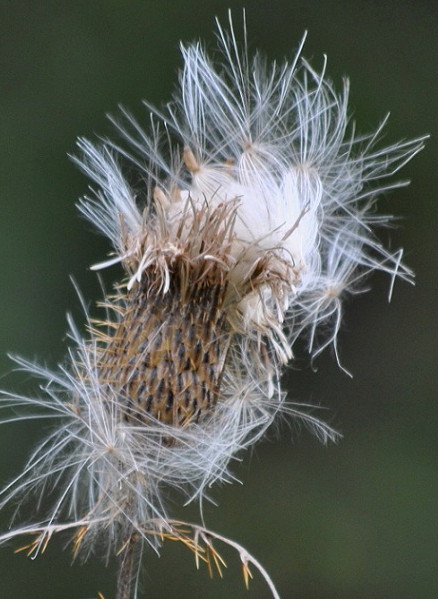
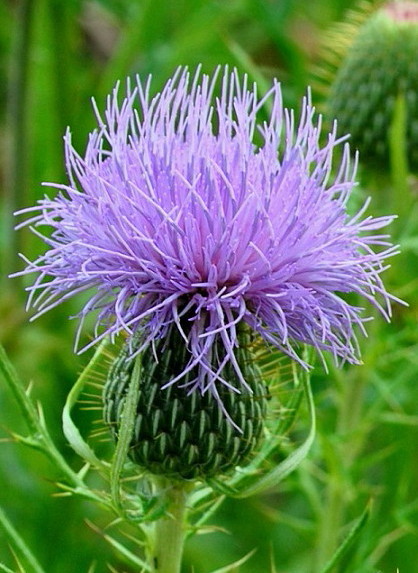
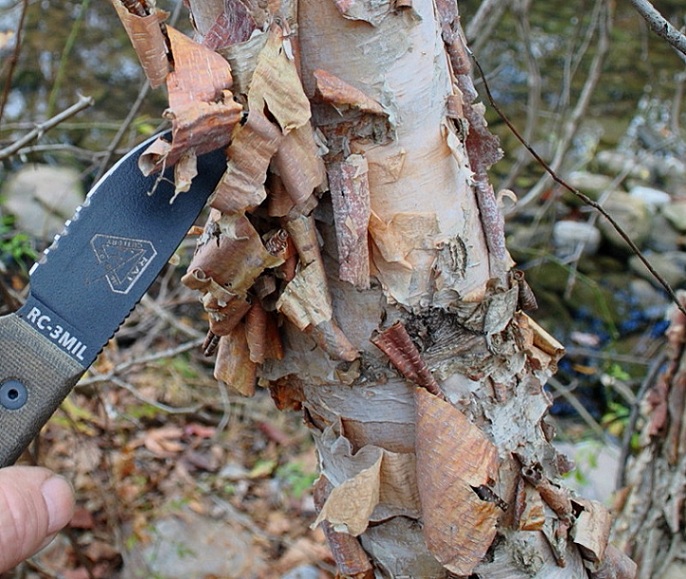
Some tree barks, such as those of cedar and some birch trees make good tinder. One of my all-time favorite tinders can often be spotted along the creeks and rivers of much of the North American continent, and that is the papery bark of the River Birch. River Birch, much like its northern cousin, the American White Birch or Paper Birch, has a fine papery bark which it sheds in large messes all along the trunk of the tree as it grows.
This is another tinder which is good to take some care with. Certain types of burrowing spiders do like to seek shelter from the elements in the dense folds and hollows afforded by the crumpled bark. You really should separate the bark and go through well before stuffing it into your pockets.
This is another tinder which is good to take some care with. Certain types of burrowing spiders do like to seek shelter from the elements in the dense folds and hollows afforded by the crumpled bark. You really should separate the bark and go through well before stuffing it into your pockets.
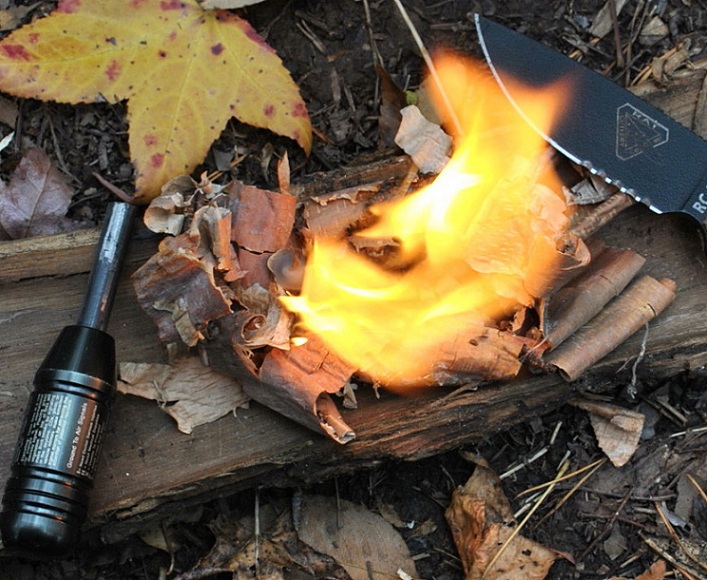
Paper bark is an easy tinder to work with, and requires little if any prep work when using flames or sparks from a ferro rod for ignition. The paper material catches easily from either source, and the oil in the bark is highly flammable.
With a little shredding and prep to make a fibrous nest of tinder material this bark will also serve quite well for expanding the ember from a fire-bow or a hand-drill into flames
With a little shredding and prep to make a fibrous nest of tinder material this bark will also serve quite well for expanding the ember from a fire-bow or a hand-drill into flames
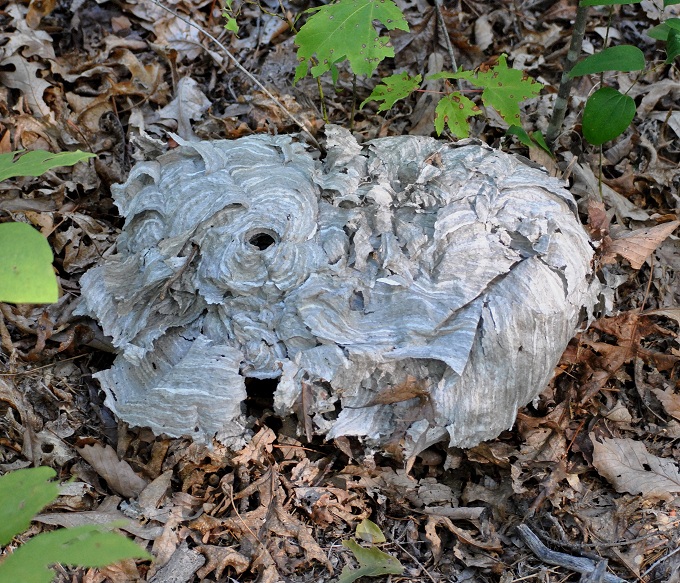
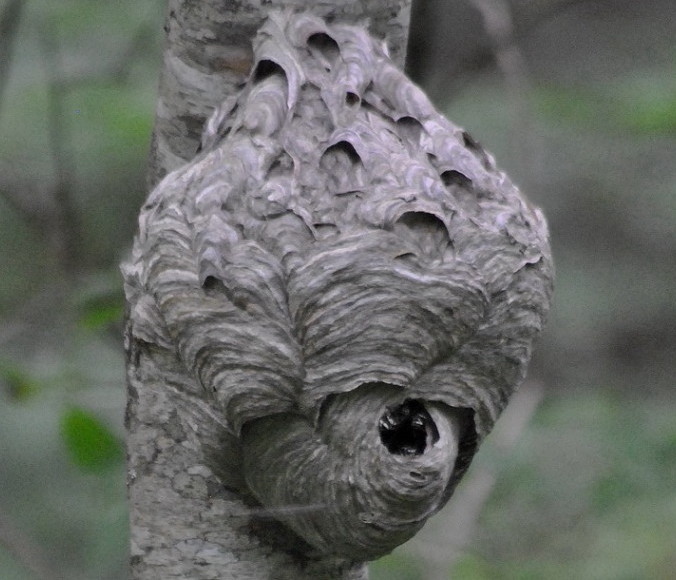
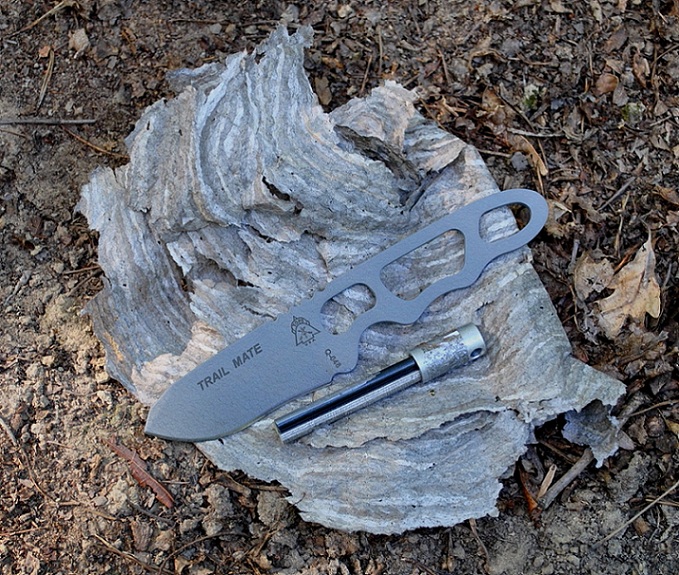
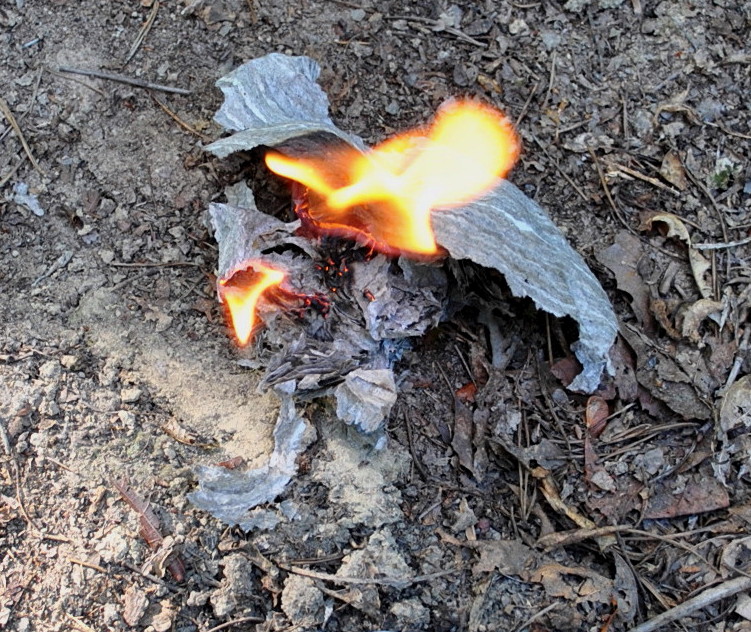
Hornet's nest are another good papery type substance that works really well for tinder material. This material can be a bit dangerous to harvest in the warmer months, particularly if you are allergic to bees. If it is during the warm months I strongly suggest you observe the nest from a reasonable distance to see if there are hornets occupying the nest. If there are then you should see them flying in and out. They are really quick so if you are far away from the nest you may not see them. Once you approach the nest, if you hear buzzing then I advise leaving the nest alone, and looking for tinder elsewhere. However there is usually very little danger in harvesting it late into the winter months once the temps have dropped below freezing a few times. Also you may find it on the ground after storms, or find the remains of a nest that has been damaged by animals or birds in their efforts to feed on the larvae within. This material when dry works well with sparks or flames.
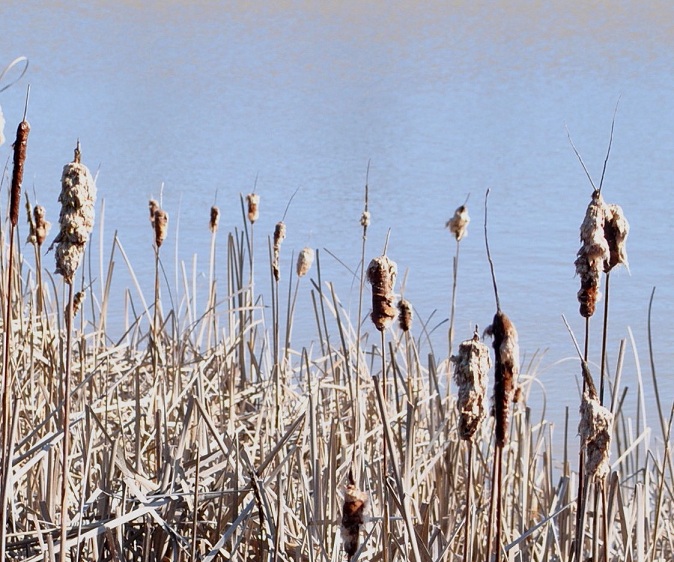
These ponds and marshes are the source of water for many forms of life in the wilderness environment as all creatures of the earth need water to survive. Mammals large and small frequent these pools for water. Because so much life is drawn to these pools they are also a source of food for the more predatory creatures of the wild. Carnivores come to feed on the smaller herbivores, and snakes come to feed on the rodents and frogs that are regulars of this ecosystem. Of these the ones most dangerous to us humans are some snakes. For the most part snakes don't want to attack humans, but the can be caught off guard in the dense growth around the edge of a watering hole. Caution should be exercised in these areas in the warmer months of the year, but in the colder months of the year, when reptiles hibernate, this is much less of a concern.
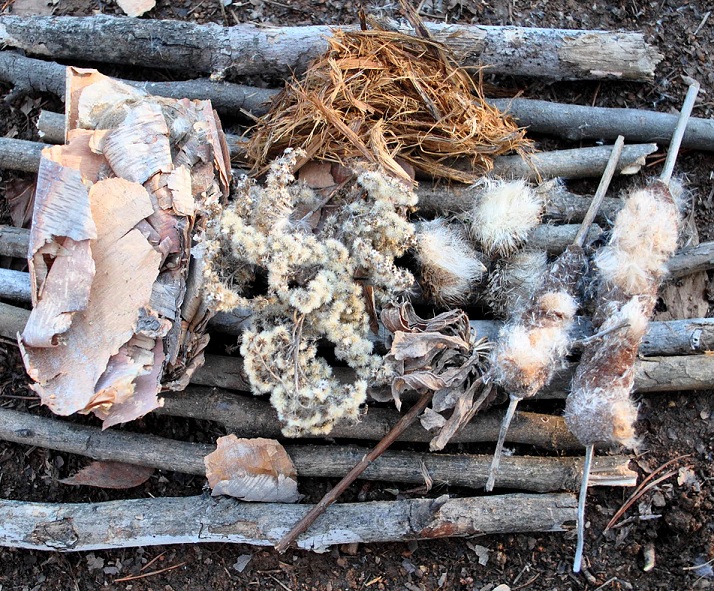
I have listed a few of the organic materials in the forests of the southeast that work well for tinder material for starting fires on dry days, and there are more out there that share common characteristics. In time, with practice and experimentation, one can tell at a glance if something is likely to work or not under current conditions. Before long one can quickly and easily gather enough materials on a dry day to get a fire started with either matches, a lighter, a ferro rod, or even a fresnel lens.
There is one exception worth noting here. While the hairy vines of the poison ivy vine look like they would make an excellent tinder they are dangerous to use because the Urushiol oils within the vine are not destroyed by fire but rather they are atomized and travel on the smoke and if inhaled can cause a severe, and possibly fatal, allergic reaction inside the lungs.
There is one exception worth noting here. While the hairy vines of the poison ivy vine look like they would make an excellent tinder they are dangerous to use because the Urushiol oils within the vine are not destroyed by fire but rather they are atomized and travel on the smoke and if inhaled can cause a severe, and possibly fatal, allergic reaction inside the lungs.
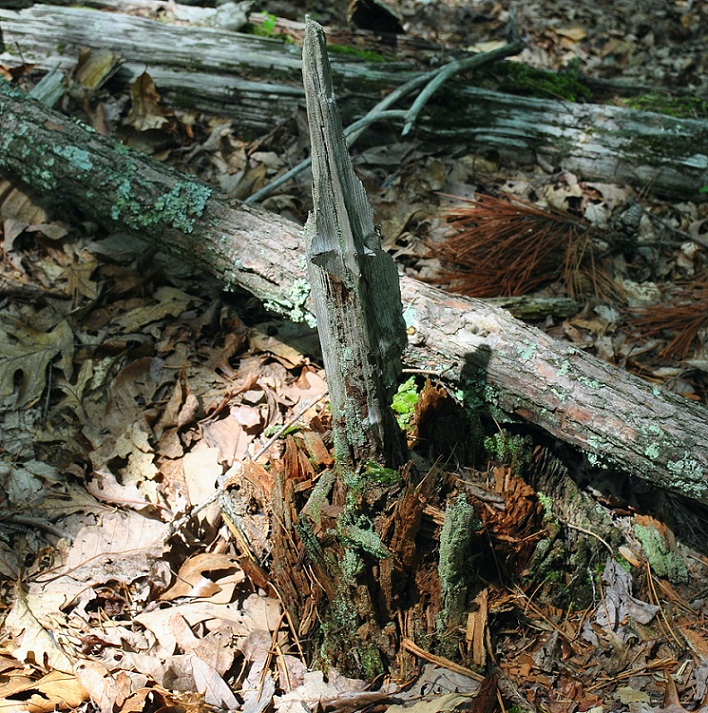
A tinder material that I am especially fond of here in the often damp and humid East Appalachian Temperate Rain Forest is very resin-rich dead pine. This material is formed primarily when a pine tree dies while still standing and the pine sap settles to the lower regions and builds up in very high concentrations. Over time the softer parts of the tree that are not filled with resin will wear away leaving a weathered heart. This heart of the pine tree may appear as just another rotten piece of wood in the forest, but this is one of those cases where appearances can be deceiving.
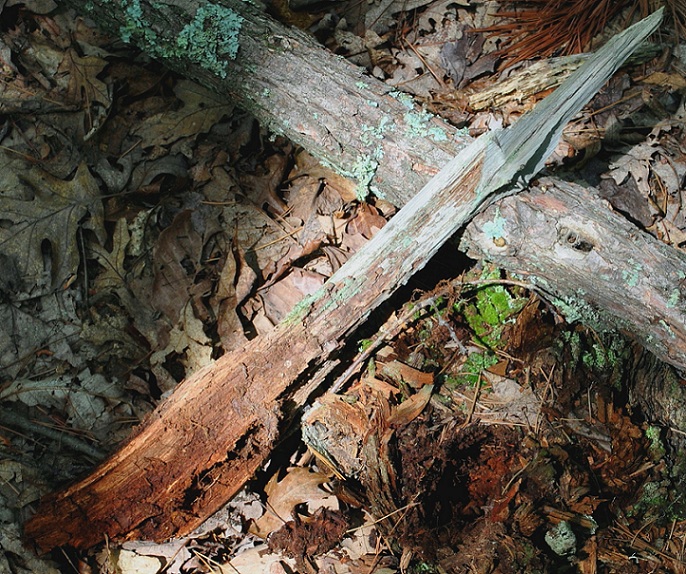
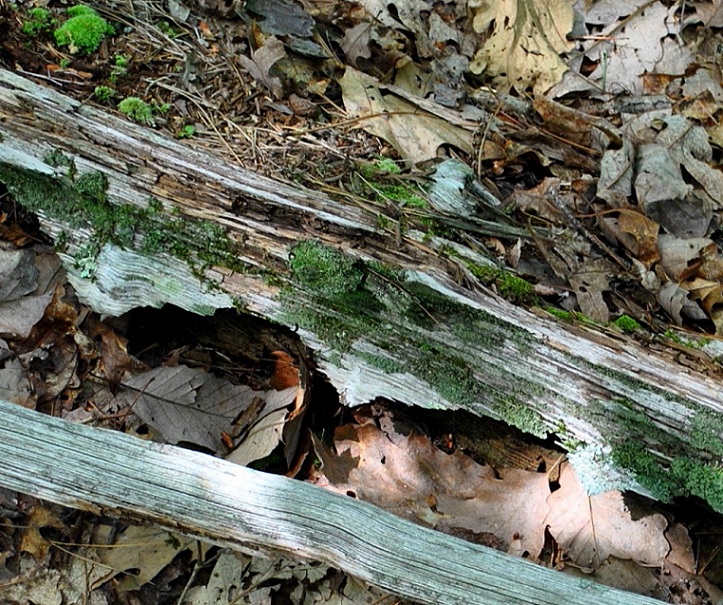
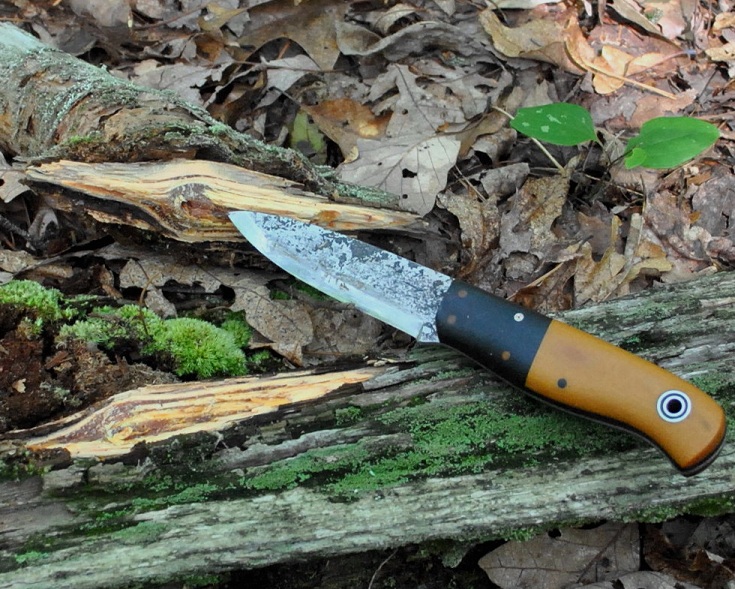
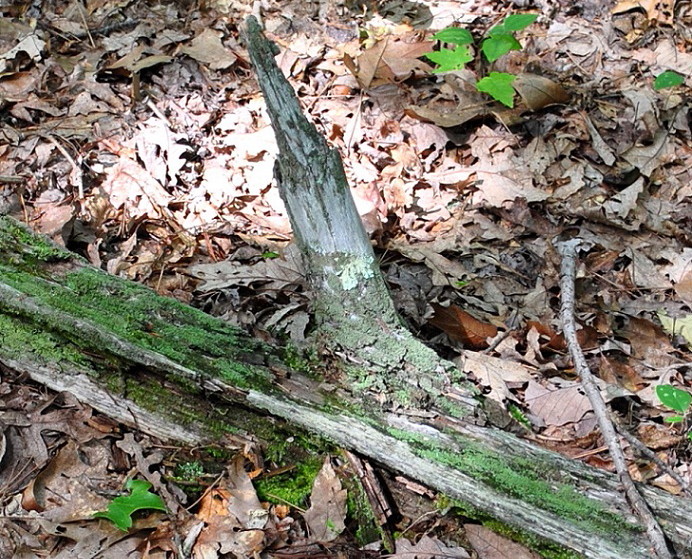
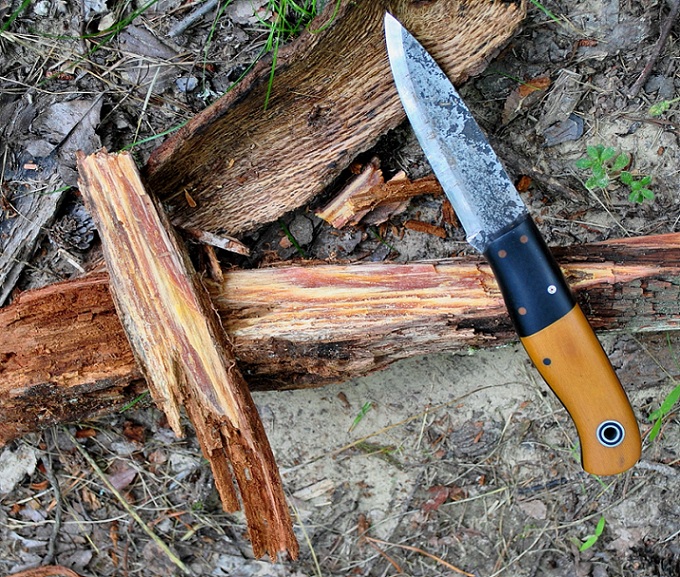
There are several little tell-tale signs that will give you clues to look for as far as outward appearance goes. It tends to wear in specific patterns...
However whether or not it is what you seek is answered immediately upon cutting into the wood....
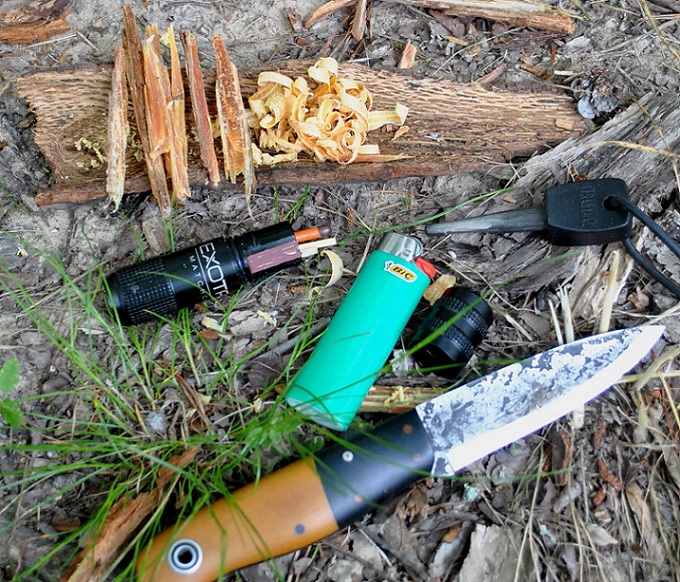
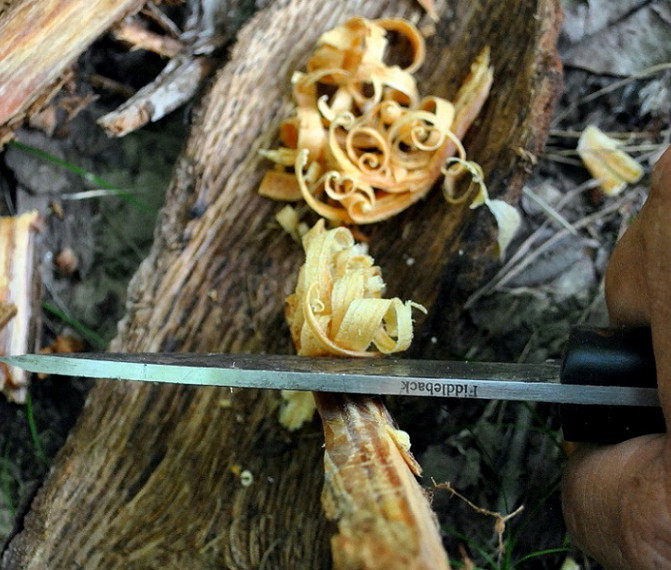
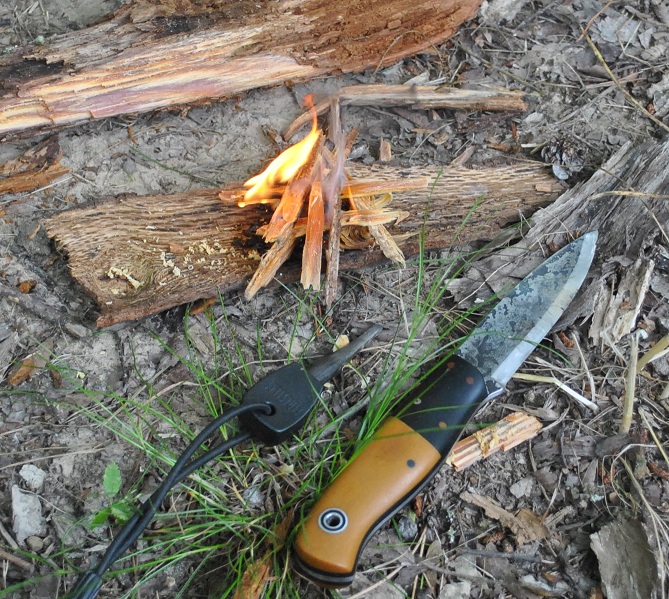
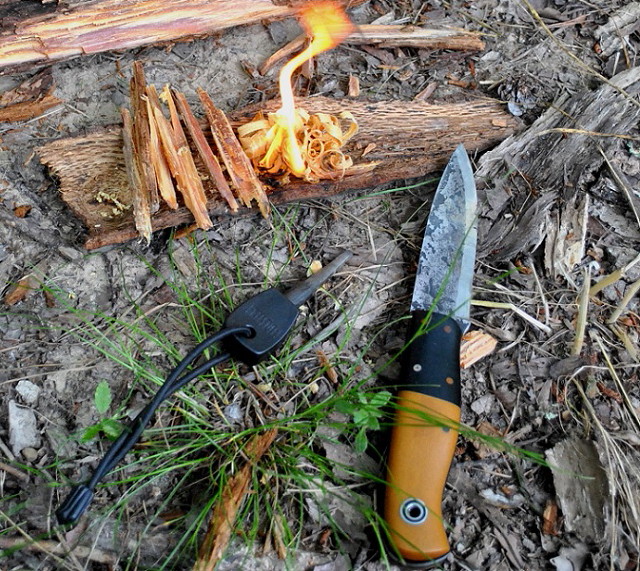
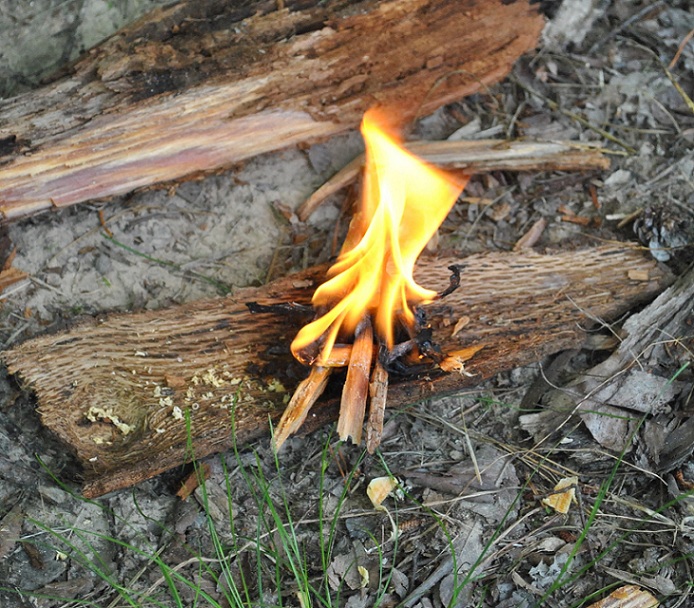
Preparation of this material is actually very simple with a good sharp knife. You just whittle of some very fine slivers for the tinder pile, and some thicker pieces for the first stage fuel....
A very small amount of this resin rich pine will burn for several minutes and produce a lot of heat...
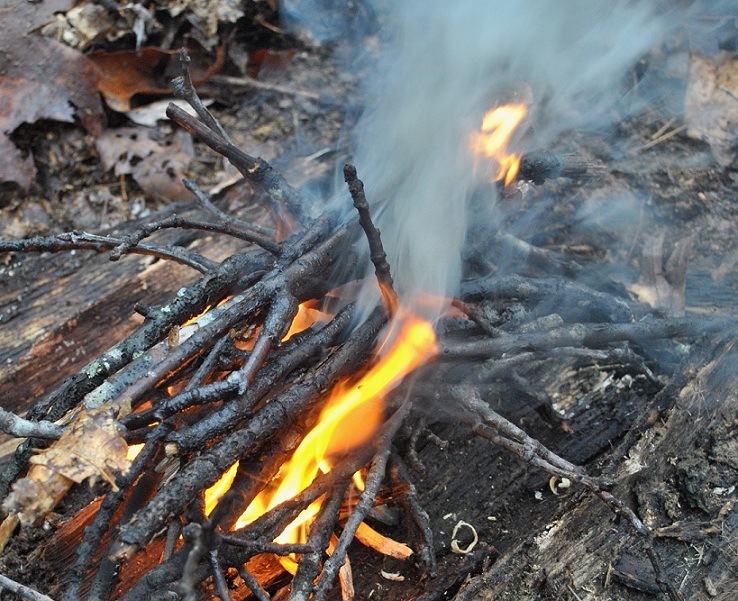
It can be used to start fires under the worst wet weather conditions...